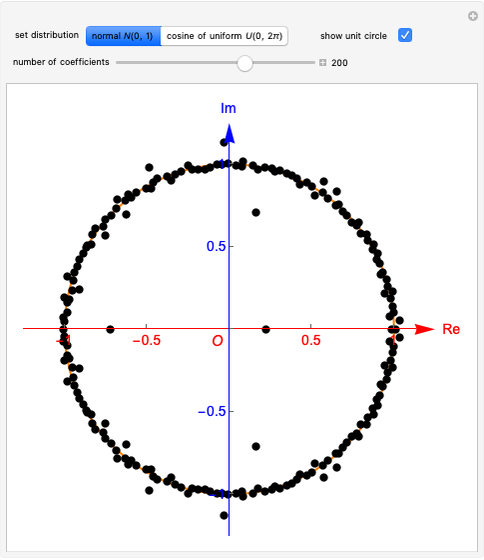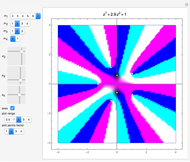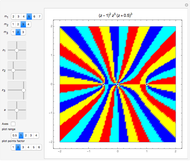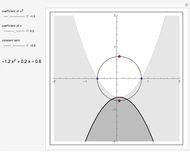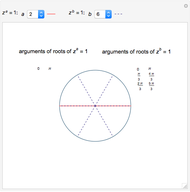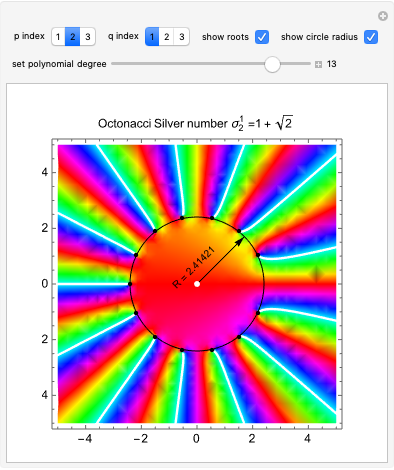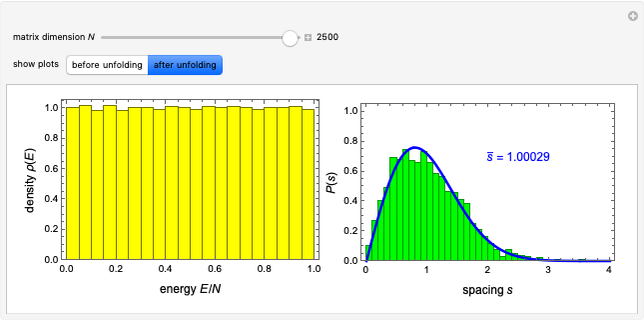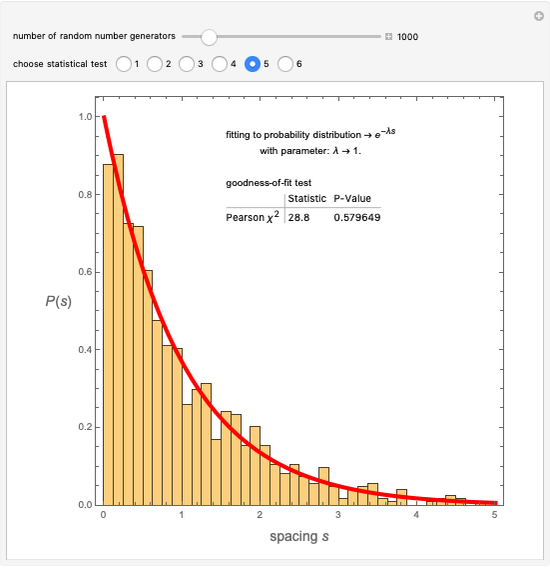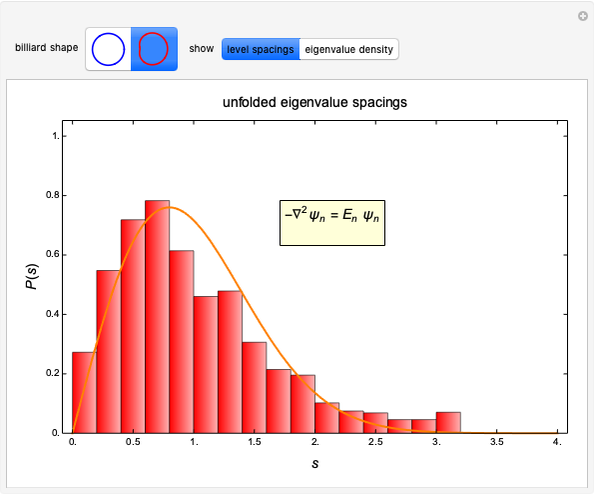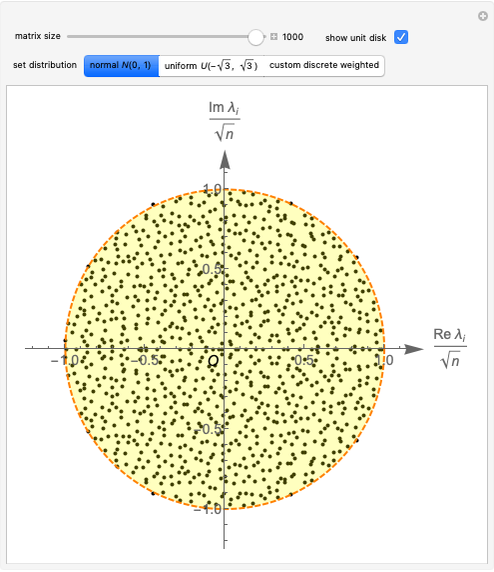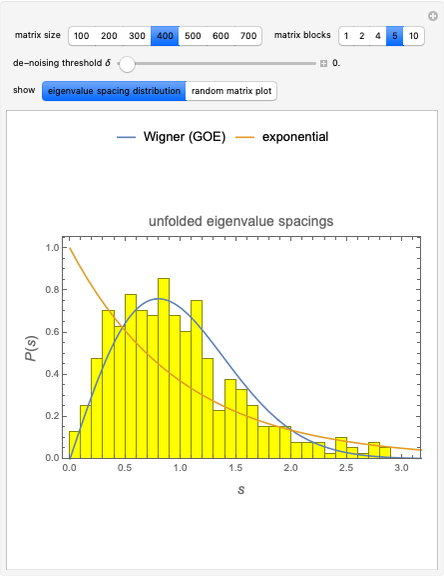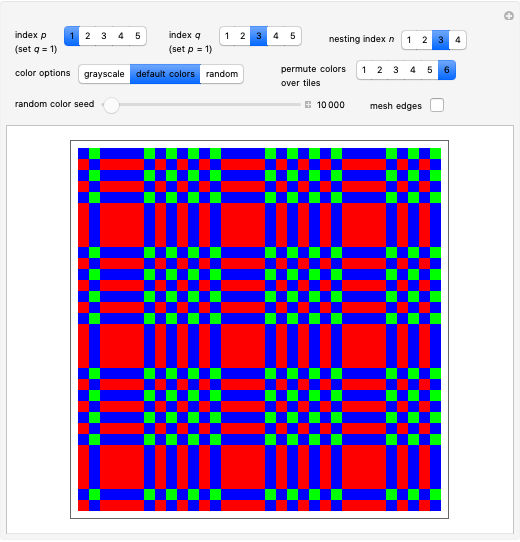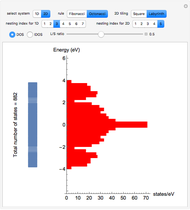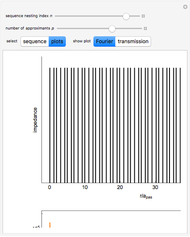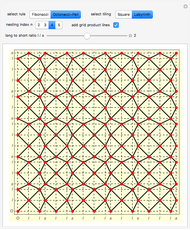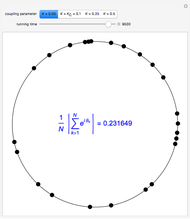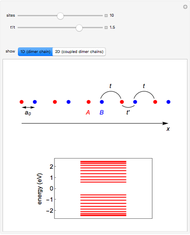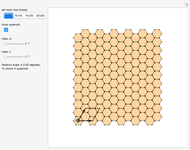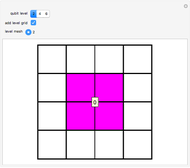Complex Roots of Polynomials with Generalized Fibonacci Coefficients

Requires a Wolfram Notebook System
Interact on desktop, mobile and cloud with the free Wolfram Player or other Wolfram Language products.
Contributed by: Jessica Alfonsi (August 2022)
(Padova, Italy)
Open content licensed under CC BY-NC-SA
Snapshots
Details
This Demonstration shows a generalization to other "metallic" numbers beyond the golden ratio of S. Rabinowitz's result for the complex roots of polynomials with coefficients from the Fibonacci sequence. According to his statements in [1, 2], each root of the equation  , with each
, with each  being a Fibonacci number, has absolute value near
being a Fibonacci number, has absolute value near  , the golden ratio.
This Demonstration shows that by introducing polynomial coefficients from generalized Fibonacci sequences
, the golden ratio.
This Demonstration shows that by introducing polynomial coefficients from generalized Fibonacci sequences  with
with  integers (see [3]), each root of the corresponding equation has an absolute value near the corresponding metallic number
integers (see [3]), each root of the corresponding equation has an absolute value near the corresponding metallic number  . From a geometrical standpoint, this implies that the polynomial roots all lie on a circle of radius
. From a geometrical standpoint, this implies that the polynomial roots all lie on a circle of radius  . For example, for
. For example, for  it can be seen that the ratio of consecutive terms
it can be seen that the ratio of consecutive terms  tends to the silver mean
tends to the silver mean  . Thus, the polynomial zeros are found on a corresponding circle of radius
. Thus, the polynomial zeros are found on a corresponding circle of radius  .
Use the interactive controls to visually explore the results for different metallic numbers
.
Use the interactive controls to visually explore the results for different metallic numbers  by changing the values of the corresponding
by changing the values of the corresponding  setters. Use the "set polynomial degree" slider to change the polynomial degree, and therefore the number of complex roots from 3 up to 15. The provided checkboxes allow for the superposition of the circle and the corresponding root points with annotated radius This work was inspired by a Wolfram community post related to Rabinowitz's problem (see Related Links).
setters. Use the "set polynomial degree" slider to change the polynomial degree, and therefore the number of complex roots from 3 up to 15. The provided checkboxes allow for the superposition of the circle and the corresponding root points with annotated radius This work was inspired by a Wolfram community post related to Rabinowitz's problem (see Related Links).
Snapshot 1: complex plot of roots of the  degree polynomial for the bronze number generalized sequence
degree polynomial for the bronze number generalized sequence 
Snapshot 2: complex plot for the  degree polynomial for the Fibonacci sequence
degree polynomial for the Fibonacci sequence  with highlighted circle of radius equal to the golden number
with highlighted circle of radius equal to the golden number
Snapshot 3: complex plot for the  degree polynomial for the generalized Fibonacci sequence
degree polynomial for the generalized Fibonacci sequence  with highlighted circle of radius equal to the nickel number
with highlighted circle of radius equal to the nickel number
References
[1] R. E. Whitney, ed., "Advanced Problems and Solutions," The Fibonacci Quarterly, 26(3), 1988 pp. 283–288. (Jun 16, 2021) www.fq.math.ca/Scanned/26-3/advanced26-3.pdf.
[2] R. E. Whitney, ed., "Advanced Problems and Solutions," The Fibonacci Quarterly, 28(3), 1990 pp. 283–288. (Jun 16, 2021) www.fq.math.ca/Scanned/28-3/advanced28-3-a.pdf.
[3] V. W. De Spinadel, "The Metallic Means Family and Art," Journal of Applied Mathematics, 3(1), 2010 pp. 53–64. (Jun 16, 2021) www.aplimat.com/files/Journal_volume_3/Number_1.pdf.
Permanent Citation







